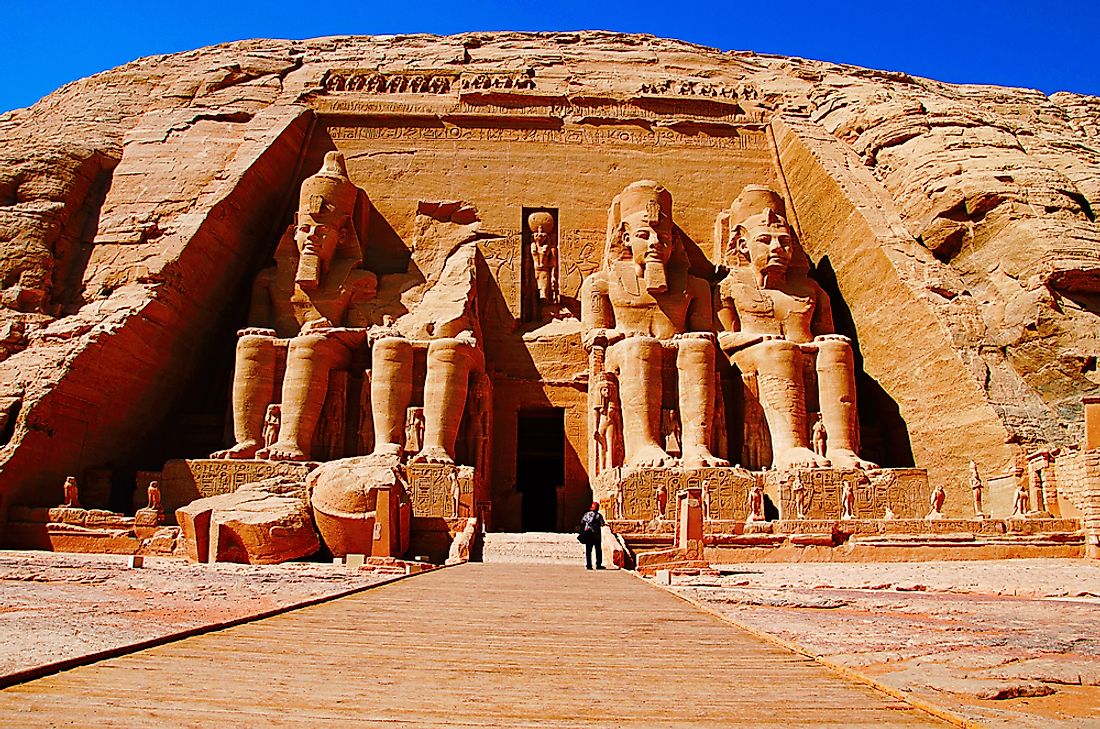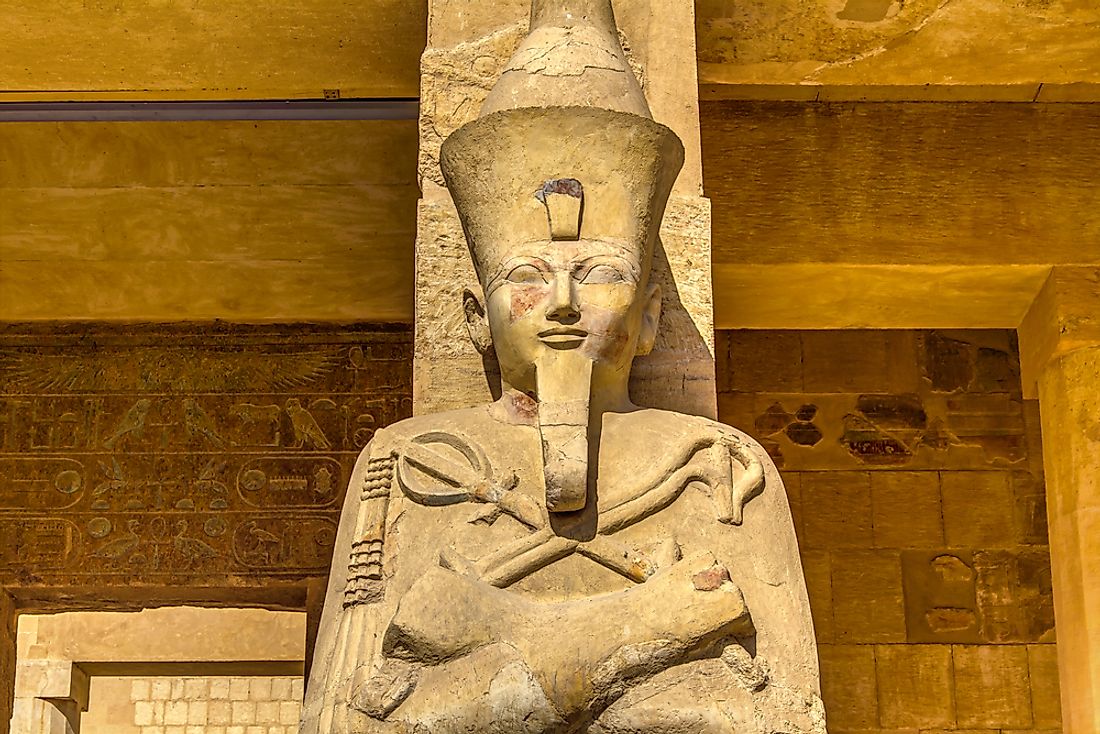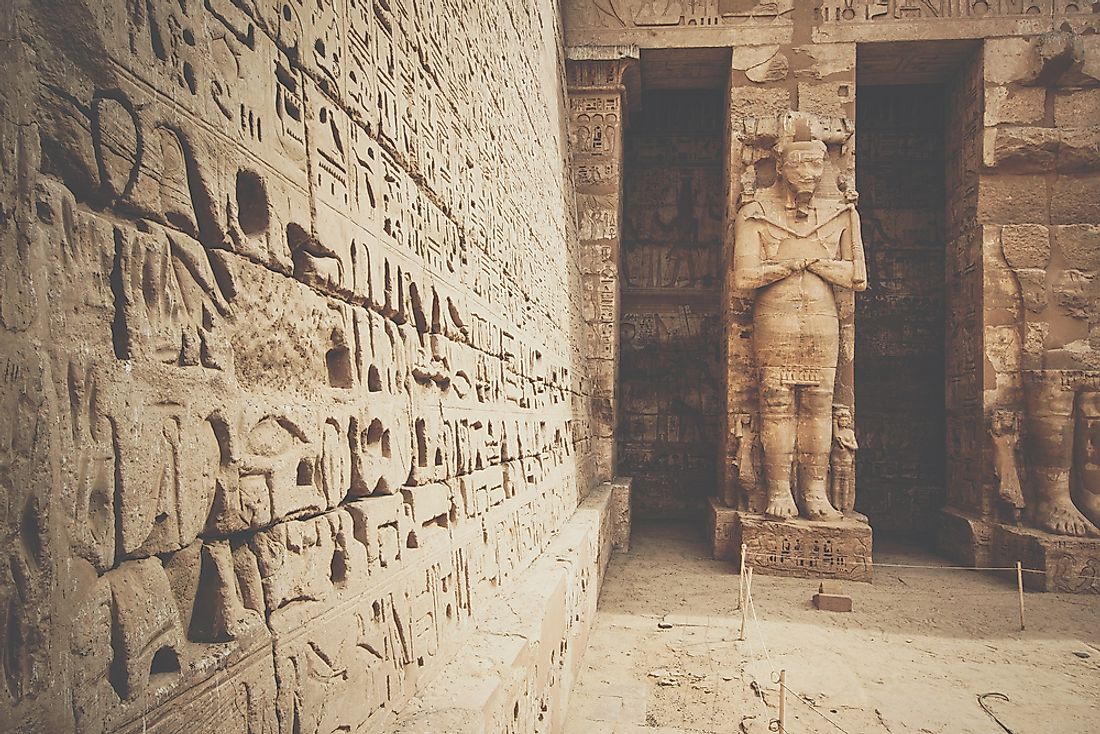Who Are the Most Famous Egyptian Rulers?

10. Amenhotep III
Amenhotep III was the ruler for 38 years during the 18th Dynasty of the New Kingdom. He is remembered most for the abundant crops that were harvested under his reign. Because of this, he was made a fertility God. Rather than pursuing military conquests, Amenhotep III focused his administration on pursuing diplomatic relationships, building monuments, and encouraging the arts. Egypt was at peace under Amenhotep III. His son Akhenaten (discussed below) went on to become king.
9. Hatshepsut

Another Pharaoh of the 18th Dynasty, Hatshepsut, became the ruler when her husband and half-brother, Thutmose II died. His son, by a different wife, was too young to assume the position at the time and Hatshepsut first became his regent. She insisted it was her right to rule based on her bloodline and wore the symbols of a king. Her rule lasted for nearly 20 years, from 1473 until 1458 BC. During this time, she ordered various building projects and sent tradesmen into Punt to bring back foreign goods. During her time, it was been nearly impossible for a woman to rule Egypt and even more rare to serve as Pharaoh. However, overcoming all the challenges, she still became a ruler.
8. Akhenaten
Akhenaten, at birth named Amenhotep IV, was the son of Amenhotep III. At the beginning of his rule, he commissioned a temple for the god Aten. In his fifth year, he built a new capital at Amarna and named it Akhetaten. At this point of time, he also changed his name to Akhenaten. He then went on to change the state religion, claiming that Aten, god of the solar disc, was the only Egyptian god. This became the first monotheistic religion of the region. One of his wives, Nefertiti, is depicted making sacrifices in many artworks of the time. Akhenaten also contributed to the arts by promoting and encouraging realistic artwork, insisting that artists represent the royal family by their true characteristics. These characteristics included elongated necks and arms, bloated stomachs, and weak muscle definition. These physical attributes are thought to be symptoms of Marfan Syndrome.
7. Khufu
King Khufu ruled during the Old Kingdom, the second Pharaoh of the Fourth Dynasty. His reign lasted from 2589 to 2566 BC. Perhaps his most well-known contribution to Egypt was the construction of the Great Pyramid of Giza, a monument that is still standing today. Researchers continue to speculate about how such a massive structure could have been built during that time. It incorporates 2.3 million stones, each weighing between 2 and 15 tons. He left such an impact on the society, that approximately 2,000 years after his death some Egyptians created a cult to worship him as a god.
6. Thutmose III
Thutmose III was the son of Thutmose II, the husband of Hatshepsut. He had been too young to rule Egypt when his father died, leaving Hatshepsut as his regent and later pharaoh of the country. Thutmose III ruled from 1479 until 1425 BC and is sometimes referred to as the Napoleon of Ancient Egypt, because of his military intelligence. He is the first person in history to utilize the sea during war efforts against the Kingdoms of Phoenicia. During his reign, Egypt carried out 16 military campaigns, capturing around 350 cities. He is known for increasing the wealth of Egypt and for treating his captures fairly.
5. Ramses III

Ramses III is another one of famous kings of Egypt. He was the second Pharaoh of the 20th Dynasty and is considered to be the last ruler with significant power. He ruled from 1187 until 1151 BC and during this time, Egypt began to lose its important role in the world. Rather than focus on construction projects, Ramses III reorganized existing temples and allocated them arable lands. At the time of his death, approximately 33% of agricultural lands belonged to the temples, leading to food shortages in the kingdom. When his workers were not paid, they organized a strike which was the first in recorded history. One of his wives and a number of his officials plotted an unsuccessful assassination attempt against Ramses III, hoping that the Queen’s son, Pentewere, would take the throne. They were found guilty and forced to commit suicide. Ramses IV, Ramses V, and Ramses VI, all his sons, went on to be the next 3 kings of Egypt. Overall, the reign of Ramses III was marked by problems and economic decline.
4. Djoser
Djoser was an Old Kingdom pharaoh during the 3rd Dynasty. He led the kingdom through great architectural and agricultural advances as well as improving trade relationships. His reign is surrounded by legend, however. Stories claim that Egypt suffered a 7-year famine and Djoser built a temple to honor Khnum, the god that controlled the flow of the Nile River. Happy with his dedication, Khnum returned the water to the river, and the famine ended.
3. Ramses II
Ramses II is considered one of the most powerful kings of Egypt of the New Kingdom. He ruled during the 19th Dynasty from 1279 until 1213 BC. Some of his greatest accomplishments while in power were the great monuments he had built. In fact, during his reign, more structures were built than during any other pharaoh’s time. Ramses II is also famous for his military achievements which allowed him to recapture Egyptian territory that had been previously lost under Akhenaten. He was celebrated by the public and made into a god. He made it his mission to return Egypt to the religion it had practiced before becoming monotheistic.
2. Cleopatra VII
Cleopatra VII is one of the most well-known of the ancient Egyptian rulers. She has been depicted in movies, plays, and books. She inherited her position after the death of her father, King Ptolemy XII. She did not, however, rule alone. Because of the laws prohibiting women from ruling the kingdom, she was forced to share her position first with her younger brother and later with her son. She claimed to be the Egyptian goddess Isis and later the Greek goddess Aphrodite, thus paying tribute to her Greek heritage. She came into rule during a time when the Roman Empire had control over the Egyptian Kingdom and demanded payment. In order to secure an alliance with the Roman Empire, Cleopatra VII formed relationships with Caesar and Mark Antony. She ruled until her death on August 12, 30 BC.
1. Tutankhamun
Tutankhamun ruled during the 18th Dynasty, becoming pharaoh at the age of 9. He was pharaoh between 1332 and 1323 BC. He moved the capital to Thebes and returned Egyptian religion to a focus on Amun, a previously worshiped God, instead of Aten. His short rule left a very small impact on Egypt. Today, he is famous for the treasures found in his tomb during the 1920’s. His tomb is also said to be cursed; dozens of people have died after coming into contact with it.











